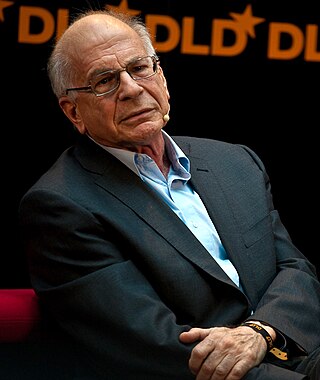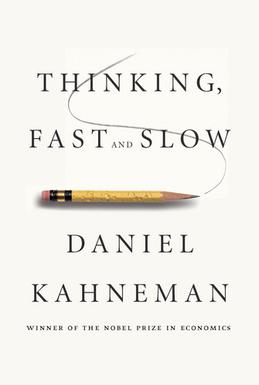Example
Tversky & Kahneman (1986) illustrated the certainty effect by the following examples.
First, consider this example:
Which of the following options do you prefer?
- A. a sure gain of $30
- B. 80% chance to win $45 and 20% chance to win nothing
In this case, 78% of participants chose option A while only 22% chose option B. This demonstrates the typical risk-aversion phenomenon in prospect theory and framing effect because the expected value of option B ($45x0.8=$36) exceeds that of A by 20%.
Now, consider this problem:
Which of the following options do you prefer?
- C. 25% chance to win $30 and 75% chance to win nothing
- D. 20% chance to win $45 and 80% chance to win nothing
In this case, 42% of participants chose option C while 58% chose option D.
As before, the expected value of the first option ($30x0.25=$7.50) was 20% lower than that of option D ($45x0.2=9) however, when neither option was certain, risk-taking increased.

A cognitive bias is a systematic pattern of deviation from norm or rationality in judgment. Individuals create their own "subjective reality" from their perception of the input. An individual's construction of reality, not the objective input, may dictate their behavior in the world. Thus, cognitive biases may sometimes lead to perceptual distortion, inaccurate judgment, illogical interpretation, and irrationality.

Amos Nathan Tversky was an Israeli cognitive and mathematical psychologist and a key figure in the discovery of systematic human cognitive bias and handling of risk.

In economics and finance, risk aversion is the tendency of people to prefer outcomes with low uncertainty to those outcomes with high uncertainty, even if the average outcome of the latter is equal to or higher in monetary value than the more certain outcome. Risk aversion explains the inclination to agree to a situation with a more predictable, but possibly lower payoff, rather than another situation with a highly unpredictable, but possibly higher payoff. For example, a risk-averse investor might choose to put their money into a bank account with a low but guaranteed interest rate, rather than into a stock that may have high expected returns, but also involves a chance of losing value.

Prospect theory is a theory of behavioral economics, judgment and decision making that was developed by Daniel Kahneman and Amos Tversky in 1979. The theory was cited in the decision to award Kahneman the 2002 Nobel Memorial Prize in Economics.
The representativeness heuristic is used when making judgments about the probability of an event being representional in character and essence of known protyical event. It is one of a group of heuristics proposed by psychologists Amos Tversky and Daniel Kahneman in the early 1970s as "the degree to which [an event] (i) is similar in essential characteristics to its parent population, and (ii) reflects the salient features of the process by which it is generated". The representativeness heuristic works by comparing an event to a prototype or stereotype that we already have in mind. For example, if we see a person who is dressed in eccentric clothes and reading a poetry book, we might be more likely to think that they are a poet than an accountant. This is because the person's appearance and behavior are more representative of the stereotype of a poet than an accountant.

Loss aversion is a psychological and economic concept which refers to how outcomes are interpreted as gains and losses where losses are subject to more sensitivity in people's responses compared to equivalent gains acquired. Kahneman and Tversky (1992) have suggested that losses can be twice as powerful, psychologically, as gains. When defined in terms of the utility function shape as in the Cumulative Prospect Theory (CPT), losses have a steeper utility than gains, thus being more "painful" than the satisfaction from a comparable gain as shown in Figure 1. Loss aversion was first proposed by Amos Tversky and Daniel Kahneman as an important framework for Prospect Theory - an analysis of decision under risk.
The conjunction fallacy is an inference that a conjoint set of two or more specific conclusions is likelier than any single member of that same set, in violation of the laws of probability. It is a type of formal fallacy.

The simulation heuristic is a psychological heuristic, or simplified mental strategy, according to which people determine the likelihood of an event based on how easy it is to picture the event mentally. Partially as a result, people experience more regret over outcomes that are easier to imagine, such as "near misses". The simulation heuristic was first theorized by psychologists Daniel Kahneman and Amos Tversky as a specialized adaptation of the availability heuristic to explain counterfactual thinking and regret. However, it is not the same as the availability heuristic. Specifically the simulation heuristic is defined as "how perceivers tend to substitute normal antecedent events for exceptional ones in psychologically 'undoing' this specific outcome."
In prospect theory, the pseudocertainty effect is the tendency for people to perceive an outcome as certain while it is actually uncertain in multi-stage decision making. The evaluation of the certainty of the outcome in a previous stage of decisions is disregarded when selecting an option in subsequent stages. Not to be confused with certainty effect, the pseudocertainty effect was discovered from an attempt at providing a normative use of decision theory for the certainty effect by relaxing the cancellation rule.
The Allais paradox is a choice problem designed by Maurice Allais (1953) to show an inconsistency of actual observed choices with the predictions of expected utility theory. Rather than adhering to rationality, the Allais paradox proves that individuals rarely make rational decisions consistently when required to do so immediately. The independence axiom of expected utility theory, which requires that the preferences of an individual should not change when altering two lotteries by equal proportions, was proven to be violated by the paradox.
The disposition effect is an anomaly discovered in behavioral finance. It relates to the tendency of investors to sell assets that have increased in value, while keeping assets that have dropped in value.

Cumulative prospect theory (CPT) is a model for descriptive decisions under risk and uncertainty which was introduced by Amos Tversky and Daniel Kahneman in 1992. It is a further development and variant of prospect theory. The difference between this version and the original version of prospect theory is that weighting is applied to the cumulative probability distribution function, as in rank-dependent expected utility theory but not applied to the probabilities of individual outcomes. In 2002, Daniel Kahneman received the Bank of Sweden Prize in Economic Sciences in Memory of Alfred Nobel for his contributions to behavioral economics, in particular the development of Cumulative Prospect Theory (CPT).
The rank-dependent expected utility model is a generalized expected utility model of choice under uncertainty, designed to explain the behaviour observed in the Allais paradox, as well as for the observation that many people both purchase lottery tickets and insure against losses.
The framing effect is a cognitive bias in which people decide between options based on whether the options are presented with positive or negative connotations. Individuals have a tendency to make risk-avoidant choices when options are positively framed, while selecting more loss-avoidant options when presented with a negative frame. In studies of the bias, options are presented in terms of the probability of either losses or gains. While differently expressed, the options described are in effect identical. Gain and loss are defined in the scenario as descriptions of outcomes, for example, lives lost or saved, patients treated or not treated, monetary gains or losses.
Heuristics is the process by which humans use mental shortcuts to arrive at decisions. Heuristics are simple strategies that humans, animals, organizations, and even machines use to quickly form judgments, make decisions, and find solutions to complex problems. Often this involves focusing on the most relevant aspects of a problem or situation to formulate a solution. While heuristic processes are used to find the answers and solutions that are most likely to work or be correct, they are not always right or the most accurate. Judgments and decisions based on heuristics are simply good enough to satisfy a pressing need in situations of uncertainty, where information is incomplete. In that sense they can differ from answers given by logic and probability.

Thinking, Fast and Slow is a 2011 popular science book by psychologist Daniel Kahneman. The book's main thesis is a differentiation between two modes of thought: "System 1" is fast, instinctive and emotional; "System 2" is slower, more deliberative, and more logical.
Insensitivity to sample size is a cognitive bias that occurs when people judge the probability of obtaining a sample statistic without respect to the sample size. For example, in one study, subjects assigned the same probability to the likelihood of obtaining a mean height of above six feet [183 cm] in samples of 10, 100, and 1,000 men. In other words, variation is more likely in smaller samples, but people may not expect this.
Risk aversion is a preference for a sure outcome over a gamble with higher or equal expected value. Conversely, the rejection of a sure thing in favor of a gamble of lower or equal expected value is known as risk-seeking behavior.
The description-experience gap is a phenomenon in experimental behavioral studies of decision making. The gap refers to the observed differences in people's behavior depending on whether their decisions are made towards clearly outlined and described outcomes and probabilities or whether they simply experience the alternatives without having any prior knowledge of the consequences of their choices.
The priority heuristic is a simple, lexicographic decision strategy that correctly predicts classic violations of expected utility theory such as the Allais paradox, the four-fold pattern, the certainty effect, the possibility effect, or intransitivities.





